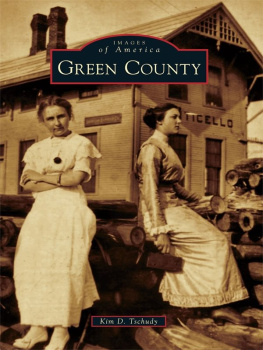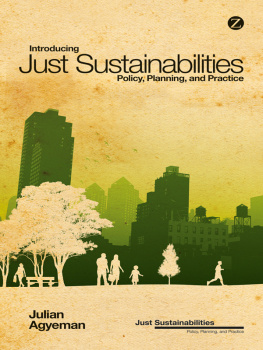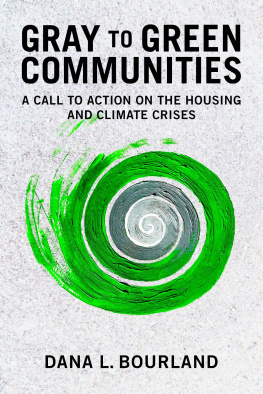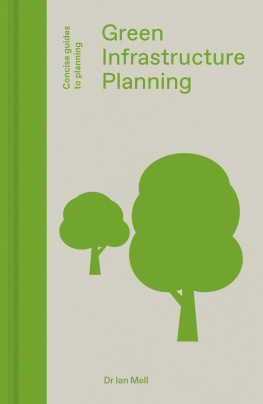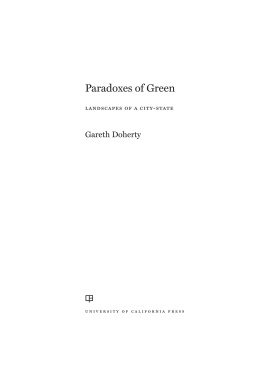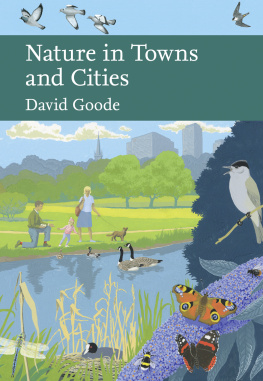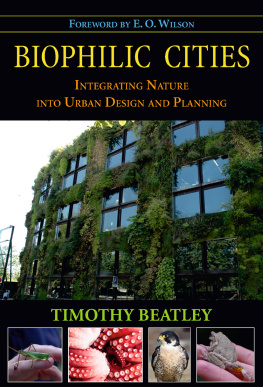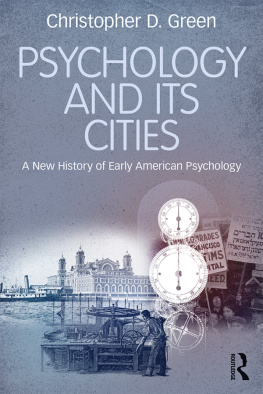Green Wedge
Urbanism
Green Wedge
Urbanism
History, Theory and Contemporary
Practice
FABIANO LEMES DE OLIVEIRA
Bloomsbury Academic
An imprint of Bloomsbury Publishing Plc

To my parents Id and Orlando, and grandmother Joana
T he origin of this book can be traced to an intriguing research visit to a library. What I saw that day sparked a curiosity that has remained active ever since. As a researcher in planning history, I was of course familiar with the manifold manifestations of the green belt idea and their representations. I had not, however, come across the idea of green wedges until the day I saw Eberstadts contrasting diagrams of concentric and radial growth, the former including a green belt, the latter green wedges. What surprised me the most was in fact the lack of references in planning history to this concept that, as I came to realize later, had a profound impact on planning theory. Hence, the journey started, and along this path many people have made important contributions.
Thanks first of all to my parents for their lifetime support and encouragement and to Krystyna Wieszczek for her kind support and thoughtful and meticulous comments on the manuscript during its last stages of preparation. The financial and moral support received from the Faculty of Creative and Cultural Industries and the Portsmouth School of Architecture at the University of Portsmouth have been instrumental in seeing this book come to fruition. In particular, I would like to thank Catherine Harper, Deborah Shaw and Pamela Cole.
My special thanks to Rikhard Manninen, Bette Lundh Malmros, Ulrika Egero, Tobias Grindsted, Sara Berg and Giovanni Sala for eagerly sharing their time and knowledge.
Lastly, the publisher and I gratefully acknowledge the permission granted to reproduce the copyright material in this book. Every effort has been made to trace copyright holders and to obtain their permission for the use of copyright material. The publisher apologizes for any errors or omissions and would be grateful if notified of any corrections that should be incorporated in future reprints or editions of this book.
T his book is the first major narrative of green wedges in urbanism to date. It constructs an untold history of the green wedge idea in international planning debates and evaluates its application in contemporary urbanism.
Grand narratives of Western planning history have consolidated the main branches of urban thought since the emergence of modern town planning as a discipline in the second half of the nineteenth century. The role of nature in this process of constitution has been made manifest as an essential planning tool with different functions relative to context and period. In attempts to distil key planning ideas of international relevance and their origins and development, historical scholarship has tended to concentrate on particular models of green space planning, while neglecting others. An example of this can be seen in the disproportionate attention dedicated to the green belt idea compared with alternative (or complementary) ones such as the green wedge. Green wedges have a deeper history in the twentieth century than many may expect. In uncovering their significance through time and space, this book not only aims to bring to light a fundamental side of planning debates, but also to contribute towards a more comprehensive and integrated history of urban and green space planning. The green wedge idea was at the forefront of the minds of planners debating urban growth and the provision of open spaces for modern cities and has perdured in contemporary planning.
It is unquestionable that the green belt promoted by Ebenezer Howard in his book To-Morrow: A Peaceful Path to Real Reform from 1898 Large-scale green structures offer a frequently untapped potential for positive transformation.
Towns, cities and regions have to deal with pressure for land development, to plan for sustainability, to mitigate the potential impacts of climate change and to promote healthier and more connected communities. In this context, the importance of green spaces within urban areas has been receiving increasing attention. Despite the fact that green wedges have been planned and implemented worldwide, there is no comprehensive study evaluating their existing and potential contributions to our living environments.
This book attempts to, firstly, delineate a new transnational narrative locating the origins and development of the green wedge idea in history and, secondly, evaluate its potential to contribute to the promotion of sustainable and resilient cities and regions in balance with nature. This study converges history, theory and practice of what we are calling Green Wedge Urbanism, shedding light on the multiple dimensions of the green wedge idea in planning cities and regions with nature.
Throughout the book, the green wedge is referred to as an idea, concept, models or a typology of green space. An idea is seen here as a thought, a principle. As a concept, the book refers to green wedges in their abstract form usually associated with an assumption of implementation and the notion of a model. The idea of a model in urban studies has multi-folded meanings. Weber, for instance, defined the very concept of city in relation to the manifestations of socio-economic relationships in space and time, referring to city models and their sub-models. In planning terms, the concept of the model, according to Choay, derives from Thomas Mores Utopia inasmuch as it embodies a critical approach to a present reality, and the modelling in space of a future one, offering thus, on the level of the imaginary, a device for the a priori conception of built space.representations of the idea, such as in Eberstadts green wedge diagram; in others, specific plans such as the Greater London Plan 1944 or Copenhagens Finger Plan 1947 would become so.
The green wedge idea became manifested as different models over time, but it generally refers to a particular articulation between open and built-up spaces in which green wedges opening out towards the countryside are interspersed between development areas.
From a landscape planning perspective, a green wedge can be presented as a typology of green space, just as an urban park or a square. This tends to happen when they are included as a non-structural element within a green space network, usually not acquiring specific hierarchical dominance. As a typology, a green wedge may also be presented as a single element not necessarily linked to a green space strategy or network.
Such a research topic presents the possibility of aligning a number of disciplines, including history, urbanism, landscape ecology and environmental planning, to mention a few. And although the book sets out to draw from, and relate to, a variety of disciplinary fields, it does so as suggested by Lepetit from the authors core discipline around which other areas of study, in this framework, orbit. The field of urbanism is here, therefore, the springboard from which an interdisciplinary construction of the research object and the arguments of the book are articulated.
A journey through the history of the green wedge idea takes us across borders of all our continents with the non-surprising exception of Antarctica. Examples have been drawn from the UK, the United States, Germany, Denmark, Sweden, Finland, Australia, the Netherlands, China, Japan and Brazil, among others. The dynamics of transnational exchange of ideas and their conditions of existence form a core preoccupation of the field of planning history. Wards categorization of the forms of reception and appropriation of planning ideas by different cultures in the timeframe of the last two hundred years is precise in moving away from univocal and unidirectional flows of influence to the study of complex and often reciprocal networks leading to hybrid assimilations and re-inventions of a core concept. It is in this light that the dissemination, appropriation and development of the green wedge idea over time and space are here considered.
Next page


